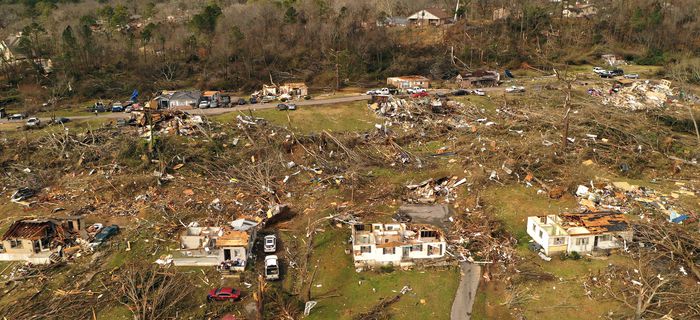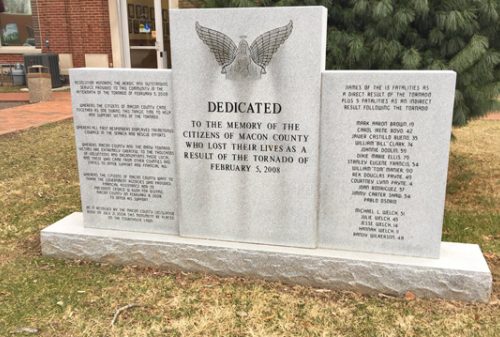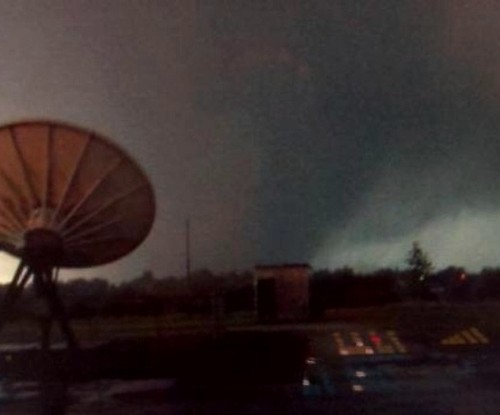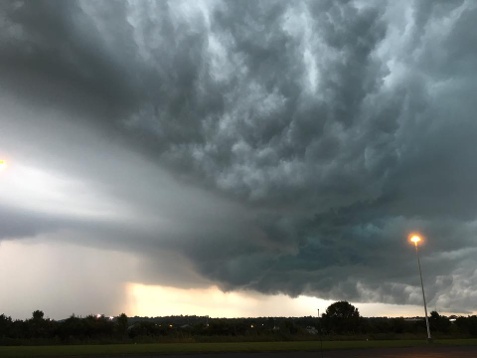There’s no severe weather on the horizon for Alabama.
But that could change over the next few weeks.
Forecasters are geared up for what is typically Alabama’s most active period for severe weather, which usually runs from March through May.
The number of tornadoes typically peaks during this time of year, and 2021 may be no exception.
In fact, there are some early signs that this spring severe weather season could be a busy one.
“We always kind of look at the months of March, April and May with a little bit of dread and know that something is going to happen in that time period,” said John De Block, the warning coordination meteorologist at the National Weather Service in Birmingham.
“The question is, how many and how bad is it going to be?”
Alabama had a total of 73 confirmed tornadoes in 2020. Fifty-two of those came in March and April (May was unusually quiet with zero tornadoes).
This year will also mark a solemn anniversary — a decade since the historic tornado outbreak on April 27, 2011. On that one day alone there were 62 tornadoes across Alabama.
De Block said forecasters are getting clues about what this season could bring in the form of analogs.
“What analogs are is basically you look at the atmosphere across the globe, or the sea surface temperatures across the globe, and you compare it to past years, past events,” he said.
“And when we do that this year, looking at the sea surface temperatures specifically, some very notable years come up — like 1974, 2011.”
Those were big severe weather years in this state.
There’s 2011, when more than 230 people died as 62 tornadoes — several of them catastrophic EF5s — touched down in the state in two waves.
1974 is remembered for the “Super Outbreak” of tornadoes on April 3 and 4, which the National Weather Service in Birmingham described as one of the “darkest times in Alabama weather history.” At least eight tornadoes killed 86 people, injured 949 and caused more than $50 million in damage.
“So there are indications that the overall weather pattern is going to be similar to the years where we have had active severe weather seasons with some significant severe weather events,” De Block said.
Is that a guarantee there will be severe weather? No. But it is something to watch.
“So that’s what kind of gives us pause to think that this could be an active, busy year for us,” he said.
“Hopefully it’s not going to be on the magnitude of April 27, 2011, but there are some indications to us that this could be a busy severe weather season.”
What will they be looking for?
Severe weather in Alabama becomes more likely when warm, moist air from the Gulf of Mexico clashes with cold continental air from the North. Throw in an active jet stream and things could get intense.
“So looping back to those analogs, that’s what we’re seeing. We’re seeing a situation where we could have that active jet stream, warm, moist air coming out of the Gulf and some periodic incursions of cold air from the North,” he said.
“So that’s what we’re going to look for. And just everybody be ready. That’s the best we can hope for.”
Forecasters go into every spring, not just this one, prepared for the worst.
“We’re in the mentality that we’re almost going into battle. This is the time of the year where our jobs really matter a whole lot. Our job of protecting life and property comes to the forefront,” De Block said.
“So, yes, there’s kind of just a background preparedness, readiness, focus that we have looking at the weather for the next three months.”
With the exception of the deadly Fultondale tornado — an EF3 storm that struck northern Jefferson County on Jan. 25 — it’s been a relatively quiet winter severe weather season for Alabama.
“The people that were affected (in Fultondale) … the EF3 was quite substantial and it was a major impact to people’s lives,” he said.
“Hopefully that will serve as a reminder for people to get prepared. Have multiple ways to get weather information and to have a plan and a kit. You need to know what to do when that time comes.”
With so many ways to get warnings there are fewer excuses to not be prepared.
“It’s astounding to me that with the technology we have today that people aren’t aware of threats of severe weather. To me there’s no excuse. There are so many ways we can get the information,” De Block said.
“You’ve got to pay attention in November through May especially in Alabama. Make a point to check the weather once or twice a day. Be on the lookout for a chance of severe weather.
“We’ve just got to do a better job of being aware of what’s coming. I think if people are aware that it’s coming they’ll do the right thing.”
by Leigh Morgan (2021, Mar 5) AL.com





